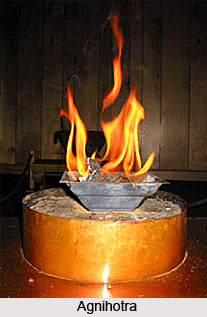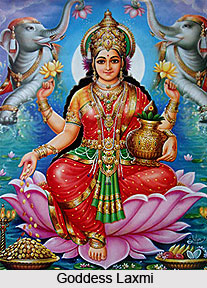 Ancient Indian customs have several references in Sanskrit literature and Indo-Aryan literature. The literary works in Sanskrit disclose the manners, customs and aspirations of the common people right from the Vedic period down to the classical era. Some of these come out to be quite attractive. Yet these provide a glance into the proletarian mind and plebeian life of the masses over the ages. Ancient Indian customs of different eras are mentioned below.
Ancient Indian customs have several references in Sanskrit literature and Indo-Aryan literature. The literary works in Sanskrit disclose the manners, customs and aspirations of the common people right from the Vedic period down to the classical era. Some of these come out to be quite attractive. Yet these provide a glance into the proletarian mind and plebeian life of the masses over the ages. Ancient Indian customs of different eras are mentioned below.
Vedic Age
Ancient Indian customs in the Vedic age appear to be quaint. The Vedic texts disclose the ancient Indian customs in the Vedic age. Like for instance, in the Rig Veda, the prayers reveal a craving for worldly happiness comprising long life, wealth of cattle, prosperity, brave sons, victory over enemies, freedom from diseases, spacious houses, etc. Beautiful women were coveted. In a marriage ceremony, there was the custom of giving presents and gifts by the father of the bride. Both bride and the groom were adorned with beautiful costumes and jewelleries. No particular marriage age constraint appears to have applied to girls. Long married life was a great desideratum and the place of the wife was considered dignified in her husband`s home. Men`s fight against women is regarded as unfair. Further, in Rig Veda, we find the custom of maintaining the son-in-law or brother-in-law unable to earn livelihood. The Vedic texts also mention the several misdeeds of a sinful nature without naming them. It was believed that the effect of sin could be removed by salutation to gods and sprinkling water on the head. A very common feature of the society was curse and several crude methods of punishment are also found in the Rig Veda. Further, there are some interesting matters found in the Vedic texts such as the birth of a male child is hailed, while that of a daughter is deprecated. A brother less girl is condemned for marriage. The following are regarded as inauspicious signs of a marriageable girl - a spot on the forehead, uncouth limbs, fierceness of looks etc.
Age of Brahmanas
There are some curious customs in the age of Brahmanas, relating to the disposal of the dead bodies of human beings. In the case of a householder, who kept Garhapatya agni (household fire). If his dead body was untraced, the following procedure was adopted. The effigy of such a man was cremated. Along with other forms of marriage, Swayamvara was in vogue. From certain references polygamy appears to have been common. At many places polyandry is prohibited. Inter-caste marriage was common in society, though marriage within the same caste was regarded as the best. In inter-caste marriage, generally the husband was of a higher caste and the wife of a lower one.
Certain practices in family life are interesting. A wife is not to take her meals before her husband. The husband is to lie on the right side of the wife. The daughter-in-law should show great respect to her father-in-law and should remain beyond his sight. Further, women are regarded as fickle-minded and hard-hearted with whom friendship is impossible.
 Some ancient Indian customs are also mentioned in Kalpasutras. As per the Kalpasutra, so far as marriage is concerned in the ancient societies, the general attitude is that marriage within the caste is good. But, inter-caste marriage also is allowed, provided the husband is of a caste higher than that of the wife. As regards the form of marriage, the people of Brahmana age believed that the quality of the progeny depended on it. The Gandharva form, which happens by mutual love, is condemned by some authorities for Brahmanas.
Some ancient Indian customs are also mentioned in Kalpasutras. As per the Kalpasutra, so far as marriage is concerned in the ancient societies, the general attitude is that marriage within the caste is good. But, inter-caste marriage also is allowed, provided the husband is of a caste higher than that of the wife. As regards the form of marriage, the people of Brahmana age believed that the quality of the progeny depended on it. The Gandharva form, which happens by mutual love, is condemned by some authorities for Brahmanas.
The sutras mention the usual eight forms of marriage, but vehemently condemn the Raksasas and Pisacas forms. In the former, the bride is captured by force, while in the latter she is seduced. Apastamba makes it clear that marital relationship arises through dharma. Thus, the implication is that force cannot create marital relationship. From the attitude of Kalpasutras it seems that, if such a marriage was not desired to be cancelled, it would be recognised according to the principle of Factum Valet. It was, perhaps, designed to give social status to a girl so married. As regards the age of the bride, the general rule is that she must be younger than the groom. But, the exact age is a matter of controversy. Excessive sleep, too much fondness for games, crying, having many friends, having a beautiful younger sister were regarded as some of the disqualifications in a bride.
As regards the time, propitious for marriage, authorities differ. From the custom of showing the sun to the bride one may infer that marriage was celebrated at daytime. After reaching the husband`s native place, the wife should spend the first night at the house of an old Brahamana lady who has her husband and children alive. Among the various practices, at the husband`s house after the bride reaches it, there is the custom of placing a boy on her lap. According to some authorities, the boy must be the son of a woman who has only sons and no daughters, and whose sons are all alive. This is believed to ensure the birth of a male child to the wife. It is clear that daughters were unwanted.
From Panini it has become clear that there were two modes of invitation for feasts, namely nimantrana and amantrana. From certain references in the Mahabhasya, polygamy appears to have been in vogue in the society of Patanjali. In this society, the birth of a male child was welcome. Thus, it is implied that the birth of a daughter was not hailed.
Age of Popular Epics
The Ramayana mentions a ceremony at the end of autumn, when harvesting was over. In it the people gathered together and partook of the first harvested grains after offering the same to gods and the manes. In this epic, few instances of popular belief were found. Another noticeable feature of folk-life was the veneration of cows. Severe sin was believed to be committed by killing cows. The gift of a cow was considered to lead to great merit. Some of the salient features of the Mahabharata society include Draupadi`s five husbands hint at the existence of polyandry, of the forms of marriage, Gandharva was very common. The epic reflects a more warlike society than that of the Ramayana. Women were highly honoured. Husbands are advised not to use harsh words to wives, because they are, indeed, incarnation of Goddess Laxmi and men`s pleasure, fame and love depend on them. The wife should look to the comfort of her husband, and never act contrary to his wish.
Apart from these the popular literary works such as Sanskrit literature and the Indo Aryan literature also provide references to ancient Indian customs.



















